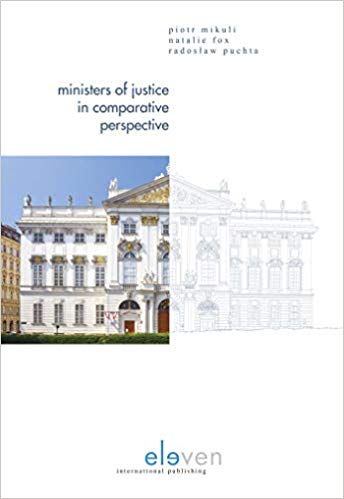Ministers of Justice in comparative perspective
- ISBN: 9789462369214
- Editorial: Eleven International Publishing
- Fecha de la edición: 2019
- Lugar de la edición: The Hague. Países Bajos
- Encuadernación: Cartoné
- Medidas: 23 cm
- Nº Pág.: 203
- Idiomas: Inglés

1 An Outline of the Constitutional Position of the Minister of Justice
1.1 General Remarks
1.2 Historical Outline
1.3 The Procedure for the Appointment and Dismissal of the Minister of Justice
1.4 Forms of Responsibility Assigned to the Minister of Justice and Exclusions in the Scope of Combination of Positions
1.5 Conclusions
2 The Impact of the Minister of Justice on the Court System and the Court
Administration
2.1 General Remarks
2.2 The Impact of the Minister of Justice on the Court System
2.2.1 Determination of the Internal Organization of Courts
2.2.2 Determination of the Territorial Structure of Courts(Creation
and Dissolution of Courts)
2.3 Appointment and Dismissal of the Heads of Courts
2.4 The Influence of the Minister of Justice on Court Administration
2.4.1 Court Administration Model Subordinate to the Minister of Justice
2.4.2 A Model of an Executive Agency Subordinate to the Minister
of Justice 2.4.3 A Model of an Independent Agency
2.4.4 A Judicial-Autonomous Model
2.5 Conclusions
3 The Minister of Justice and Judges
3.1 General Remarks
3.2 Impact of the Minister of Justice on Persons Appointed to Positions of
Judges
3.2.1 The Executive Model
3.2.2 The Transitive Model
3.2.3 The ModelIncluding theAppointment Function of the Judicial Councils
3.3 The Minister of Justice and the Disciplinary Liability of Judges
3.4 Influence of the Minister of Justice on the Process of Education of Candidates for Positions of Judges
3.5 Conclusions
4 Duties of the Ministers of Justice Not Directly Related to the Judiciary
4.1 General Remarks
4.2 The Minister of Justice As the Minister of Law
4.3 The Minister of Justice and Prosecution of Offences
4.3.1 The So-Called Personal Union Model
4.3.2 Ministerial Model
4.3.3 Mixed Model
4.3.4 The Model of Separation of the Prosecutor’s Office
4.4 Duties Related to the Prison System and Probation
4.5 Conclusions
Epilogue
Normative Acts
Bibliography






